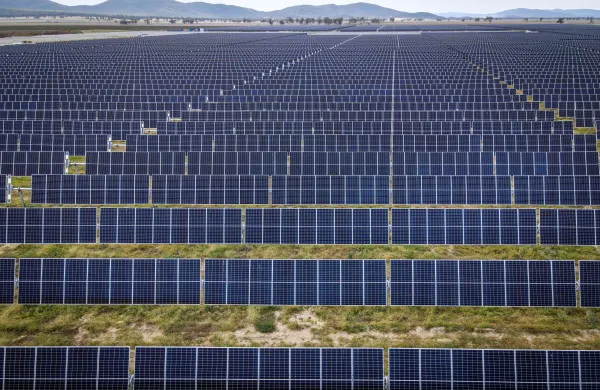Dimensional Fund Advisors is not attracting money from financial advisors and institutions like it historically has. Even prior to the Covid-19 pandemic, which caused a historic market downturn and led some investors to exit the market, the stream of money flowing to Dimensional relative to the money leaving had weakened.
As the Austin-based mutual fund company steadily added billions of dollars each year, net fund flows were consistently positive for almost the entirety of the past decade. Then, in December of 2018, there was a reversal. As volatility spiked and equity markets fell, investors sold securities to offset tax liabilities for that calendar year (a practice known as tax-loss harvesting). Net flows at Dimensional, or DFA, that month were negative $3.75 billion as a result, according to Daniel Sotiroff, a manager research analyst at Morningstar.
Before that December, the last time DFA had a net outflow was March 2009, when net flows were negative $233 million, Morningstar estimates.
The outflow in late 2018 occurred under exceptional market circumstances. In January 2019, investors needed to get back into the market and returned to DFA. The fund manager brought in a net $4.33 billion. The company added almost another $3 billion in net flows during February of last year, too.
But it seems that enthusiasm, at least measured by net flows, has deflated. The remainder of 2019 was unlike any in more than a decade. Although net flows for all of 2019 were $4.58 billion, DFA ended the year with four straight months of outflows totaling an estimated $4.47 billion, according to Morningstar.
The total in 2019, while positive, was far below the money of recent years: DFA attracted $16.6 billion in 2018; $31.15 billion in 2017; $21.42 billion in 2016; $23.21 billion in 2015; and $29.21 billion in 2014.
Through the first quarter of 2020, net flows at DFA were an estimated negative $7.22 billion. But, like December of 2018, these are not normal times. The pandemic — a truly unprecedented event and accompanying circumstances — also caused investors to flee markets, especially in March and April as the number of daily new cases in the U.S. continued to sharply rise.
Dimensional’s U.S. mutual fund flows in the first quarter were better than the broader industry average. The largest 50 fund families by total assets in active funds lost an average of 2.8% of their assets to outflows during the quarter — with 46 out of 50 firms having negative flows. Dimensional’s outflows represented about 1.7% of assets, according to Morningstar.
To borrow liberally from Winston Churchill, this is not signaling the end of Dimensional Fund Advisors. It is not even the beginning of the end. But it is, perhaps, the end of the storied asset manager’s beginning.
A string of outflows totaling in the billions during favorable market conditions would be a problem at most asset managers. But at DFA, which managed $454 billion as of March 31, those outflows are not alarm-sounding and “hardly a big thing,” Sotiroff told RIA Intel.
Still, the recent changes in net flows beg questions. “We don’t know with 100 percent confidence what is going on. But you can look at trends and kind of know what is going on in the background,” Sotiroff said about DFA.
The asset manager has been facing headwinds when it comes to fees because its strategies “are kind of active and kind of passive and they are priced in between the two,” Sotiroff said. Certain factors, like those favoring value and small cap stocks, haven’t produced the desired returns over the last 10 years relative to growth stocks, narrowing the performance gap between index mutual funds and ETFs and other strategies.
However, DFA’s funds are priced much closer to index mutual funds and ETFs than they are to most active mutual funds. And the company has been lowering fees in recent years.
“Since its founding, Dimensional has been a leader in driving costs lower on behalf of investors. We have made reductions to fees in 2015, 2017, and 2019. Additionally, the tax impact of our tax-aware solutions is similar to that of ETFs. We will always look for opportunities to lower total cost of ownership,” Dimensional said in a statement.
The company did not respond to follow-up questions about net flows during 2019.
The asset manager has more competitors claiming to run similar strategies now, including American Century Investments’ Avantis Investors, a group that splintered out of DFA and that is led by Eduardo Repetto, the former co-CEO and co-chief investment officer of Dimensional. Firms like Avantis could be “a potential threat to them down the road,” but it would be a long stretch to directly connect Dimensional’s recent outflows to inflows at a short list of other asset managers, Sotiroff said.
“In terms of future growth, I still see Dimensional growing strong. For this reason, the fee-only advisor community is only getting bigger,” said Massi De Santis, the founder of Austin-based DESMO Wealth.
Before founding his private wealth management business, De Santis held senior investment strategy positions at Dimensional and was an assistant professor at Dartmouth College, where he taught finance and macroeconomics.
Since he started his own RIA in 2006, Yardley Wealth Management near Philadelphia, Michael Garry has used Dimensional funds. But even he admitted that underperformance of value relative to growth had led him to choose other funds for new clients, who might not quickly appreciate Dimensional’s investment philosophy. Garry plans to continue to use DFA funds — in addition to the investment management, consulting, and resources available to advisors that are unlike those offered by other asset managers, he said. (Some advisors adore Dimensional, just don’t call the disciples a cult.)
Like the others, Sotiroff is eager to see what happens next.
“The flows are not mammoth compared to the asset base they have. I think what is going to be interesting is will [DFA’s net flows] continue downward, or flatten out, or bounce back once we get past the worst of this virus?”
Correction: A previous version of this story stated the estimated outflows at Dimensional Fund Advisors were $10.37 billion in the first quarter of 2020. The actual estimated outflows were $7.22 billion.
To keep up with news about Dimensional Fund Advisors, subscribe to RIA Intel's twice-weekly newsletter and follow it on Twitter @RIAIntel.
Contact Michael Thrasher at michael.thrasher@institutionalinvestor.com or securely message him on Signal: 330-962-6441. Follow him on Twitter @Mike_Thrasher.







